Description
Fundamentals of Nursing Human Health and Function Craven 7th Edition Test Bank
Fundamentals of Nursing Human Health and Function Craven Hirnle 7th Edition Test Bank
***THIS IS NOT THE ACTUAL BOOK. YOU ARE BUYING the Test Bank in e-version of the following book***
Name: Fundamentals of Nursing Human Health and Function
Author: Craven Hirnle
Edition: 7th
ISBN-10: 1605477281
Type: Test Bank
– The test bank is what most professors use an a reference when making exams for their students, which means there’s a very high chance that you will see a very similar, if not exact the exact, question in the test!
– The file is either in .doc, .padf, excel, or zipped in the package and can easily be read on PCs and Macs.
– Delivery is INSTANT. You can download the files IMMEDIATELY once payment is done.
If you have any questions, please feel free to contact us. Our response is the fastest. All questions will always be answered in 6 hours., most of the time within 30mins
We also faced similar difficulities when we were students, and we understand how you feel.
But now, with the Fundamentals of Nursing Human Health and Function Test Bank, you will be able to
* Anticipate the type of the questions that will appear in your exam.
* Reduces the hassle and stress of your student life.
* Improve your studying and also get a better grade!
* Get prepared for examination questions.
*Can save you time and help you understand the material.
This is the quality of service we are providing and we hope to be your helper.
Delivery is in the next moment. Test Bank is accurate.
Prepare to receive your Fundamentals of Nursing Human Health and Function Test Bank in the next moment.
If you have any questions, or would like a receive a sample chapter before your purchase, please contact us at inquiry@testbankcorp.com
Fundamentals of Nursing Human Health and Function Test Bank
Fundamentals of Nursing Human Health and Function Craven Hirnle 7th Edition Test Bank ISBN: 1605477281
1. In the provision of nursing care, it is most important to perform which of the following actions?
A) Administration of prescribed medications
B) Implementation of physician’s orders
C) Evaluation of patient’s responses
D) Coordination of care with the healthcare team
Ans: D
Feedback:
Nurses have moved from simply observing and giving prescribed medications to coordinating clinical information for the entire healthcare team.
2. A nurse is caring for a 17-year-old pregnant woman. The woman needs to buy a baby bed and obtain baby items. The nurse should encourage the patient to go to
A) The visiting nurse association
B) A resale shop
C) A rental equipment store
D) The welfare office
Ans: B
Feedback:
Nurses should be familiar with available emergency care, equipment rental stores, chore and homemaker services, home-delivered meals, visiting nurse services, and should know where welfare and Medicare/Medicaid offices are located. The nurse should be familiar with WIC centers and resale stores to assist new mothers.
3. A home care nurse has completed a home assessment. Of the following findings, which should be reported to service providers immediately?
A) Infestation with roaches
B) The smell of natural gas
C) Unclean environment
D) Diminished food sources
Ans: B
Feedback:
A comprehensive home assessment includes safety, sanitation, mobility, temperature, and personal space. All of the listed deficiencies are of a concern. The immediate concern for the nurse’s and patient’s safety is the threat of fire or explosion due to the smell of natural gas.
4. A patient is diagnosed with mild dementia while in the hospital. In preparing for discharge, the nurse should discuss with the family the:
A) Possible need for home care
B) Legal responsibility for the future
C) Need for transfer to a long-term care facility
D) Lack of free resources of care
Ans: A
Feedback:
The needs of the patient should be considered when making discharge plans. Common risk factors associated with the need for home care include limited social, mental, or physical functioning. Legal issues, long-term care, and free resources are not indicated in this situation.
5. The home care nurse asks the patient and family about their socioeconomic status, culture, and beliefs. This occurs during which phase of care?
A) Assessment
B) Nursing diagnosis
C) Outcome criteria
D) Implementation
Ans: A
Feedback:
During the assessment phase of a home care visit, the nurse collects subjective information on how the person normally manages at home, what the home is like, and what family and community support is available. The nurse explores the patient’s beliefs and culture, competencies, capabilities, concerns, deficits, and limitations to understand how the patient manages at home and what she or he desires. Nursing diagnosis, outcome criteria, and implementation occur later in the nursing process as a result of assessment data.
6. When the nurse is involved in the in-home phase, the nurse should
A) Use therapeutic communication
B) Record findings
C) Plan the next visit
D) Summarize accomplishments
Ans: A
Feedback:
The in-home phase involves establishing the professional therapeutic relationship and implementing the nursing process. During the in-home phase, the nurse must use therapeutic communication skills.
7. A home care nurse has just completed a dressing change on her patient. Which statement best describes the termination phase?
A) “You need to eat more protein to assist you with wound healing.”
B) “On a scale of 0 to 10 with 0 being no pain and 10 being the worst, where would you rate your pain?”
C) “Your wound is healing nicely. It is draining less and it is smaller by a half centimeter.”
D) “Have you had any problems since our last visit? Is your wife doing well with your dressing changes?”
Ans: C
Feedback:
The summarization of the purpose of the visit is evident with the description of the accomplishments of the visit. Discussion of diet, pain, and evaluation of caregiver competency should be done before the termination of care.
8. What is the purpose of the Standards of Care and Standards of Professional Performance?
A) To list treatments in the home care setting
B) To assist with virtual scenarios in the home
C) To understand the role of the medical nurse in the home
D) To guide the home care nurse in a collaborative role
Ans: D
Feedback:
The Standards of Care and the Standards of Professional Performance guide the home care nurse in his or her collaborative role with the patient and family to identify the healthcare needs for management in the home setting.
9. When initiating home healthcare services, during which phase is it appropriate for the nurse to implement the initial patient assessment?
A) Initiation phase
B) Previsit phase
C) In-home phase
D) Termination phase
Ans: C
Feedback:
Initial assessment should be conducted in the in-home phase according to Stanhope and Lancaster. The initiation phase consists of clarifying the source of referral and the purpose of the visit, as well as the initial contact with the family. Reviewing records and scheduling visits occurs during the previsit phase. Summarization and determining the need for further visits occurs during the termination phase.
10. An 82-year-old woman is being discharged from the hospital following a bowel resection. The woman lives alone and her family is out of town. Which factor will have the greatest effect on her home care management?
A) Support systems
B) Medication management
C) Transportation
D) Psychosocial needs
Ans: A
Feedback:
Since this woman lives alone and has no family available, the patient may not be able to stay at home and may need to be placed in a facility to provide adequate support.
11. A patient has severe pain related to degenerative joint disease. On which aspect of care will the nurse need to focus first?
A) Patient education on pathophysiology
B) Ability to perform daily activities
C) Patient’s financial resources
D) The effects of social isolation
Ans: B
Feedback:
Severe pain can decrease a person’s ability to carry out activities of daily living and function; therefore, this is the primary concern of the home health nurse at this time since this is a basic need. The other areas can be addressed at a later time.
12. A single parent, aged 17 years with one child and pregnant with her second child, has the mental age of a 12-year-old. As the home care nurse, what is your greatest concern in caring for this woman?
A) Her ability to bond with her children
B) Her ability to receive financial aid
C) Her cognitive ability to understand
D) Her physical care abilities
Ans: C
Feedback:
The cognitive ability of this individual is of greatest concern regarding all aspects of her survival. The cognitive ability to understand how to organize work, manage financial responsibilities, and ensure safety within the home is essential.
13. A 16-year-old girl has been injured in an accident and is receiving home care due to fractures and multiple trauma related injuries. She states, “I don’t know why I survived and not my best friend.” It is most important to
A) Communicate her feelings to family and friends
B) Allow the religious force in her life to visit
C) Be certain that her educational needs are being met
D) Increase her activity to assist in her coping ability
Ans: A
Feedback:
The home care nurse can assist in coordinating care needs and encouraging family, teachers, schoolmates, and friends to understand the patient’s struggles and help support her needs.
14. An 18-month-old child is ventilator dependent due to infantile scoliosis. This is the first time the child has been home since birth. His parents are very concerned about providing care. It is most important to assist the parents with
A) Financial needs of care
B) Prevention of infection
C) Emotional bonding
D) Genetic counseling
Ans: C
Feedback:
The child has not been home since birth. Thus, the parents will need emotional assistance to enhance bonding. The nurse supports the parents to meet the infant’s physical and emotional needs and encourages them to strengthen the parent-child bond.
15. Home care nurses are required to complete the Outcome and Assessment Information Set according to
A) Medicare
B) Medicaid
C) Third-party payer
D) Insurance
Ans: A
Feedback:
The Outcome and Assessment Information Set provides standardized guidelines for admission and care, as well as a national database for evaluation, reimbursement, and quality improvement. The OASIS system of data collection is used by Medicare.
16. It is important for home healthcare nurses to remember which point?
A) The nurse is the primary caregiver.
B) The nurse is the guest in the patient’s home.
C) Rehabilitation is the major patient goal.
D) The nurse should act as a counselor and advisor.
Ans: B
Feedback:
An essential difference in home care versus acute care is that the home care nurse is a guest in the patient’s home. Family or other support persons are the primary caregivers, rehabilitation may not be the goal, and the nurse does not typically act as a counselor or advisor.
17. A patient is having an increasing amount of difficulty caring for herself in her home alone. She states to the nurse, “I need more help. What am I going to do?” It would be important for the nurse to have the
A) Social worker visit to discuss care options
B) Physical therapist help with rehabilitation
C) Home health aide increase visits for bathing
D) Occupational therapist assess for adaptive devices
Ans: A
Feedback:
Services to manage healthcare needs in the home can involve a team of interdisciplinary professionals, including social workers. The social worker is able to identify resources to meet the patient’s needs.
18. A woman living alone has degenerative joint disease, hypertension, and neuropathy. It is difficult for her to bathe herself, and her blood pressure is unstable. What type of care would this patient benefit from most?
A) Acute care
B) Ambulatory care
C) Home care
D) Respite care
Ans: C
Feedback:
Home healthcare services are delivered to persons at home who are recovering from illness, are disabled, or are chronically or terminally ill and need various services to progress, maintain function, or perform their ADLs. Acute and ambulatory care are delivered on a short-term basis, and respite care’s focus is on the caregiver.
19. One of the primary advantages to the managed care model is
A) Increased patient satisfaction
B) Economic quality care
C) All RN staff
D) Distinct area of care
Ans: B
Feedback:
Case management is used in such situations to ensure optimum, high-quality care in the most efficient and economic manner.
20. Prior to the patient’s discharge from an acute care facility, the nursing case manager has the nursing staff, patient, patient’s family, physical therapist, and home health nurse meet. The purpose of this is to
A) Provide patient teaching
B) Evaluate the effectiveness of the hospitalization
C) Determine hospital-based services
D) Prepare the patient for home care
Ans: D
Feedback:
Discharge planning prepares a patient to move from one level of care to another within or outside the healthcare facility.
21. A nurse is covering all aspects of admission procedures for a patient who is receiving home health services. The nurse explains what procedures will be covered during his visits. Which of the following aspects of the admission process does this represent?
A) Establishing rapport and showing willingness to listen
B) Clearly defining the purpose and expectations of the admission
C) Documenting the procedure
D) Assisting in participation of the care-related decisions
Ans: B
Feedback:
During the admission to the healthcare system, patients should understand the purpose and expectations of admission.
22. Continuity of care for a particular patient is important to prevent
A) Multiple providers
B) Infection
C) Fragmentation of services
D) Rising healthcare costs
Ans: C
Feedback:
Continuity of care is the provision of healthcare services without disruption, regardless of movement between settings.
23. The home care nurse is providing care and education to a woman who is pregnant with her first child. The patient states, “I have no money or food. I don’t know what I should do. I want to provide for my unborn child.” The nurse refers the woman to the WIC program and a local food bank. This is an example of what aspect of community-based nursing?
A) Assessment
B) Planning
C) Restoration
D) Evaluation
Ans: B
Feedback:
Planning and intervention focus on using individual, family, and community resources to assist in restoring a patient’s health to maximum possible functioning, while continuing to monitor for possible side effects or complications to treatment.
24. A community health nursing student is assessing the birth rates and death rates of his local municipality and comparing these rates to the nation and the world. This is an example of what type of nursing?
A) Community-based nursing
B) Epidemiologic nursing
C) Community health nursing
D) Statistical nursing
Ans: C
Feedback:
Examining birth rates and death rates of a community is the focus of community health nursing. Community health nursing focuses on patients and populations of the community.
25. Care of women in the home prior to delivery is considered
A) Community-based nursing
B) Postpartum nursing
C) Antepartum nursing
D) Residential-based nursing
Ans: A
Feedback:
Community-based nursing focuses on individuals and families within the community.
26. When educating patients in the community on health promotion and prevention of disease, it is important to stress which of the following factors?
A) Strenuous exercise is necessary for health
B) Education should emphasize society’s needs
C) Education should take place only in healthcare settings
D) Dietary needs should be covered in depth
Ans: B
Feedback:
Common to all programs will be the need for greater individual authority, accountability, and responsibility with less reliability on institutional authority and policies. Nursing education is evolving and redirecting its emphasis to meet society’s changing needs.
27. Occupational health nursing is classified as
A) Community-based healthcare
B) Institutional healthcare
C) Residential healthcare
D) Tertiary healthcare
Ans: A
Feedback:
Community-based healthcare is developed within the context of a community. Care of employees in an occupational setting is considered to be community-based healthcare.
28. Community-based healthcare is best defined as
A) Home care in a community setting
B) Healthcare developed in partnership with communities
C) Patient-centered care in a senior citizen complex
D) Healthcare directed to the community at large
Ans: B
Feedback:
Community-based healthcare is developed within the context of a community.
29. An example of a secondary healthcare setting is a(an)
A) Inpatient cardiovascular surgery unit
B) Scoliosis screening in a school
C) Health maintenance network
D) Preferred physician network
Ans: A
Feedback:
Secondary care settings include hospitals and surgery units that provide acute care.
30. Which facility is an example of a tertiary healthcare setting?
A) Rehabilitation facility
B) Outpatient surgery center
C) Medical division in the hospital
D) Ambulatory care clinic
Ans: A
Feedback:
Tertiary care settings include rehabilitation and long-term care facilities.
31. An example of primary healthcare is
A) A hearing screening in the school setting
B) Care of the patient in the intensive care unit
C) Diagnostic testing for HIV/AIDS
D) Care of the patient on rehabilitation
Ans: A
Feedback:
Primary prevention or primary healthcare involves the screening of patients in the prevention of disease.
32. Your hospital has decided to begin to offer home health services to its patients. What is the most likely reason for the addition of these services?
A) The need for continuity of care
B) The promotion of worldwide healthcare
C) The change to shorter hospital stays
D) The need for decreased financial expenditures
Ans: C
Feedback:
Decreased hospital stays have led to an increase in community-based healthcare services.
33. One of the most significant trends in healthcare today is
A) Increased length of hospital stays
B) Shift from hospitals to community-based care
C) Emphasis on disease management
D) Narrowing of the areas for nursing practice
Ans: B
Feedback:
The shift to community-based care is related to the public’s desire to participate more actively in healthcare decisions, issues, and choices.
34. Nurses who assist patients to deal holistically with their healthcare needs at the end of their lives work primarily in which healthcare delivery system?
A) Acute care
B) Primary care
C) Hospice
D) Rehabilitation
Ans: C
Feedback:
The opportunity to help people maintain their ability to remain at home and deal holistically with their health and family needs at the end of their lives is home health hospice care.
35. The primary nurse shares with the healthcare team the need for her patient, diagnosed with cancer, to attend her daughter’s wedding. She is serving in what role as a nurse?
A) Caregiver
B) Educator
C) Counselor
D) Advocate
Ans: D
Feedback:
The primary nurse should serve as an advocate for her patients.
36. A nurse is caring for an elderly patient in the home. He concludes that the patient needs an x-ray to determine if the patient has pneumonia and requires oxygen for shortness of breath. He calls to inform the physician of the patient’s status and then makes arrangements to carry out the physician’s orders. In this scenario, what role does the nurse play?
A) Case manager
B) Nurse practitioner
C) Clinical nurse specialist
D) Advanced practitioner
Ans: A
Feedback:
Case management means the nurse coordinates many resources to maximize the opportunity for people to manage their own healthcare at home.
37. A nurse is working in a public school as the school nurse. This nurse is considered to be working in which role?
A) Ambulatory care
B) Community health
C) Inpatient facility
D) Rehabilitation facility
Ans: B
Feedback:
A nursing employed as a school nurse is considered to working in community-based care.

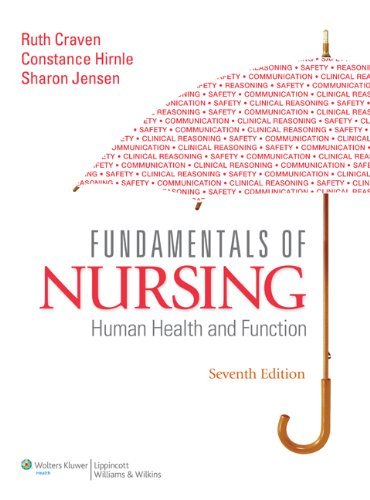
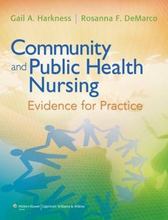
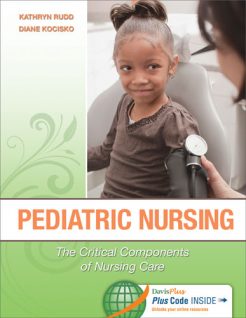
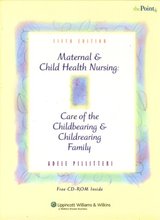
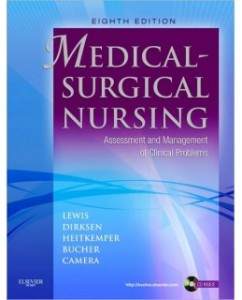

Reviews
There are no reviews yet.